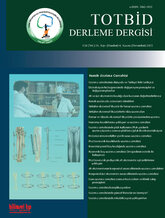
Posttraumatic leg length discrepancies in pediatric patients represent a significant orthopedic challenge that can lead to both structural and functional impairments during growth. This review aims to provide a comprehensive overview of the etiology, diagnostic approaches, and current treatment strategies for posttraumatic limb length inequalities in children. Common mechanisms include physeal arrest, overgrowth, and segmental bone loss, primarily resulting from growth plate injuries. Diagnostic tools such as block testing, long-standing radiographs, EOS imaging, and growth prediction methods play a critical role in assessment. Treatment is tailored according to the severity of the discrepancy, the child`s age, and remaining growth potential, with options ranging from conservative interventions to surgical procedures. When appropriately timed, epiphysiodesis and distraction osteogenesis offer favorable outcomes, especially when combined with longterm follow-up and rehabilitation strategies. Current literature emphasizes the necessity of individualized treatment planning within a multidisciplinary framework.